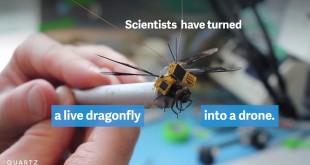Introduction: The Urgency of a Global Bioeconomy
The global bioeconomy stands at a pivotal juncture, offering transformative solutions to existential threats such as climate change, food insecurity, and resource scarcity. With the global population projected to exceed 10 billion by 2050, the demand for sustainable food production, renewable materials, and carbon-neutral energy will surge. We face the dual pressures of repairing environmental damage from the past century while producing 70% more food, using less land, less water, and bracing for more frequent and severe weather events. At the same time, the demand for carbon-based materials in the chemicals sector alone is projected to triple by mid-century.
The McKinsey Global Institute’s 2023 update to its Bio Revolution Report underscores that biobased solutions could address 60% of global physical inputs, potentially generating $4 trillion annually across sectors like agriculture, energy, and materials. Yet, despite this promise, the bioeconomy faces a critical challenge: translating scientific breakthroughs into scalable, market-ready solutions within a timeframe that matches the urgency of global crises. Biotech has the potential to redefine what we eat and wear, the drugs we take, the fuels we burn, and the materials we use. Yet despite high expectations, the past 50 years have produced only modest commercial success stories outside of healthcare—none rising to the level of true blockbusters.
Technological Convergence: AI, Quantum Computing, and Biotechnology
The fusion of cutting-edge technologies is reshaping the bioeconomy landscape. Generative AI (GAI) and quantum computing are accelerating biodesign, enabling researchers to engineer microbes, plants, and enzymes with unprecedented precision. For instance, companies like Ginkgo Bioworks leverage AI to design custom microbes for biodegradable plastics, while Zymergen employs machine learning to optimize microbial fermentation processes, reducing development timelines by 50%. Quantum computing, though nascent, is unlocking complex protein-folding simulations, expediting drug discovery and enzyme engineering. These tools are not just theoretical—DeepMind’s AlphaFold 3, released in 2024, has revolutionized protein structure prediction, aiding in carbon-capture enzyme design.
Historical Context: Lessons from Past Successes and Failures
While industrial biotechnology has seen milestones—like bio-based lactic acid (used in PLA plastics) and engineered crops—progress remains slow. Many successes, such as Cargill’s BioIndustrial segment, took decades to commercialize. The synthetic biology sector, despite $50 billion in cumulative investment since 2000, has seen mixed returns. However, recent IPOs like Ginkgo Bioworks (2021) and Amyris’ pivot to sustainable cosmetics ingredients signal growing investor confidence.
The lesson? Long development cycles demand patient capital and strategic partnerships, as seen in Novozymes and DSM’s joint ventures for bio-based enzymes.
Current Challenges: Time to Market and Investment Returns
The 15–25-year timeline from lab to market remains a bottleneck. Regulatory hurdles, such as the EU’s stringent Genetically Modified Organism (GMO) laws, and scaling challenges in biomanufacturing delay adoption. Investors, wary of prolonged returns, often shift focus to software-driven sectors. Yet, emerging models offer hope. The U.S. National Biotechnology and Biomanufacturing Initiative (2022) invests $2 billion in domestic bioproduction infrastructure, while SynBioBeta reports a 30% increase in venture funding for startups focusing on rapid prototyping, such as Evolva’s AI-driven fermentation optimization.
Building a Modern Ecosystem: Strategies for Acceleration
To propel the bioeconomy forward, a cohesive, multi-pronged ecosystem is essential to compress development timelines and scale innovations. Central to this effort are public-private partnerships, which bridge gaps between research and commercialization. The EU’s Circular Bio-Based Europe Joint Undertaking (CBE JU), for example, has allocated €1 billion to fund cross-border projects, such as converting agricultural residues into sustainable aviation fuel (SAF) and bioplastics. Similarly, the U.S. Department of Energy’s Bioenergy Technologies Office collaborates with companies like LanzaJet to pilot SAF production, aiming to replace 10% of global jet fuel with bioalternatives by 2035. These partnerships de-risk investments and align stakeholders around shared climate goals.
Regulatory innovation is equally critical. The FDA’s 2023 BioTech Pilot Program fast-tracks approvals for bio-based materials, slashing review times by 40% for products like biodegradable packaging and lab-grown textiles. Singapore’s Agri-Food Innovation Lab mirrors this approach, offering a sandbox for testing novel biofertilizers and vertical farming systems without traditional regulatory bottlenecks. Such frameworks empower startups to iterate quickly while ensuring safety and sustainability.
Education and workforce development are the backbone of a sustainable bioeconomy. Universities like MIT and Wageningen now offer specialized Bioeconomy MBA programs, blending biotech, policy, and business analytics. These programs cultivate leaders capable of navigating complex supply chains—such as Benson Hill, which leverages CRISPR-edited soybeans to produce plant-based proteins at scale. Meanwhile, Germany’s BioEconomy Cluster trains technicians in AI-driven biomanufacturing, addressing a global talent gap projected to reach 1.5 million workers by 2030.
Decentralized biomanufacturing is democratizing access to infrastructure. Startups like Culture Biosciences offer cloud-connected 5L bioreactors, enabling remote R&D at 1/10th the cost of traditional labs. This model has empowered companies like MycoWorks to scale mushroom-based leather production globally, reducing reliance on centralized facilities.
To solve this, we must reimagine the bioeconomy as a unified, efficient ecosystem—one that links discovery, development, regulation, manufacturing, and market adoption into a coherent pipeline. We need an industrial-scale infrastructure that enables rapid deployment and scale-up, not isolated innovation hubs that struggle in silos.
Public-Private Partnerships: Catalyzing the Bioeconomy Through Collaboration
The success of the global bioeconomy hinges on robust, sustained partnerships between governments and industry—a lesson underscored by both past missteps and recent breakthroughs. While the U.S. and EU have historically wavered in their support, initiatives like the U.S. Inflation Reduction Act (2022) and the EU’s Updated Bioeconomy Strategy (2023) signal renewed commitment. These policies prioritize bio-based solutions for energy independence, supply chain resilience, and climate mitigation, offering tax credits for sustainable aviation fuel (SAF) production and grants for circular materials.
To accelerate progress, industry must lead ecosystem-building. The Alternative Fuels and Chemicals Coalition’s 2023 report advocates for radical collaboration, urging companies to adopt open innovation models akin to BioMADE (Bioindustrial Manufacturing & Design Ecosystem), a U.S. consortium linking startups like Solugen with manufacturers like Cargill to co-develop carbon-negative chemicals. Similarly, the EU’s Circular Bio-Based Europe Joint Undertaking (CBE JU) funds cross-sector hubs where agribusinesses (e.g., BASF) partner with tech firms to convert farm waste into biodegradable textiles. These alliances are shortening R&D cycles: AI-driven platforms like Ginkgo Bioworks’ Codebase now predict microbial strain performance in weeks, not years, while cloud labs such as Culture Biosciences enable remote bioprocess optimization.
A critical gap remains: fragmented access to resources. The proposed Global Bioeconomy Gateway—a digital one-stop hub—could streamline funding, talent, and infrastructure sharing. Imagine a startup in Brazil using the platform to license CRISPR IP from MIT, partner with ADM for pilot-scale fermentation, and secure offtake agreements from Unilever—all within months. This model mirrors Singapore’s Agri-Food Tech Accelerator, which reduced time-to-market for alt-protein ventures by 40% through centralized mentorship and prototyping facilities. For such ecosystems to thrive, industries must prioritize collective success over individual control, embracing standardized sustainability metrics (e.g., PDH’s BioPreferred labeling) to build consumer trust.
The path forward demands a cultural shift. As Christine Gould (CEO, Thought For Food) notes, “The bioeconomy isn’t a sector—it’s a mindset.” By marrying policy ambition with industry-led agility, we can transform the bioeconomy from a patchwork of pilots into a $4 trillion engine for planetary resilience. The time for siloed efforts is over; the future belongs to those who collaborate.
Case Studies: From Labs to Global Impact
-
Sustainable Aviation Fuels (SAF)
Companies like Neste and LanzaJet are leading the SAF revolution, converting forestry waste and carbon emissions into jet fuel. United Airlines, partnering with Twelve, aims to use 10 million gallons of SAF annually by 2030, cutting lifecycle emissions by 85%. The U.S. Inflation Reduction Act’s tax credits ($1.25/gallon for SAF) further incentivize adoption, with global production expected to hit 25 billion liters by 2030. -
CRISPR-Enhanced Crops
Pairwise’s gene-edited, non-browning greens—approved under the USDA’s streamlined SECURE 2.0 rules—are now in U.S. supermarkets, reducing food waste by 40%. Similarly, Benson Hill’s ultra-high-protein soybeans require 30% less water, addressing both food security and drought resilience. -
Carbon-to-Value Innovations
LanzaTech’s gas fermentation technology, deployed in ArcelorMittal’s steel plants, captures 200,000 tons of CO2 annually, converting it into ethanol for fuels and fabrics. Partnering with Cotopaxi, they’ve launched the first apparel line made from recycled carbon emissions, showcasing circular economy potential
Conclusion: Synergy for Speed
By intertwining policy agility, education, and decentralized tech, the bioeconomy is shifting from incremental progress to exponential impact. These strategies—validated by real-world success—are not just accelerating timelines but redefining what’s possible in the race against climate change. The future hinges on scaling this blueprint globally, turning today’s pilot projects into tomorrow’s industrial norms.
 International Defense Security & Technology Your trusted Source for News, Research and Analysis
International Defense Security & Technology Your trusted Source for News, Research and Analysis


